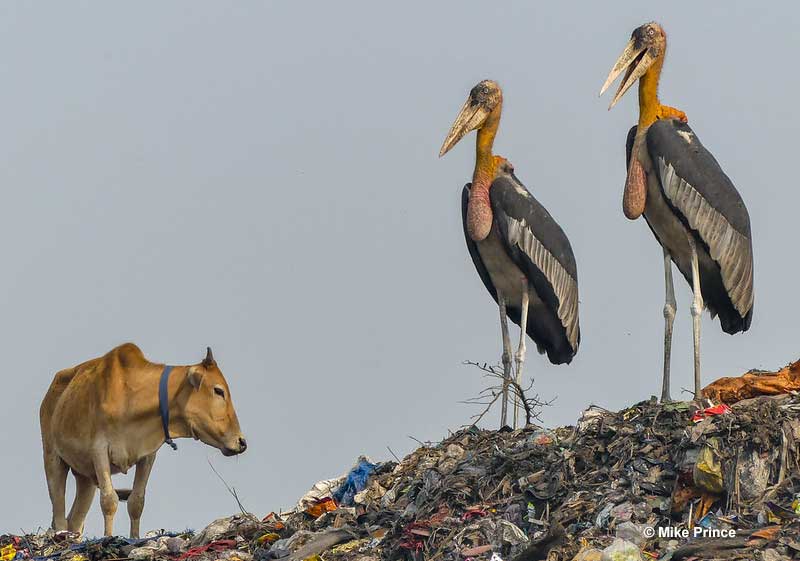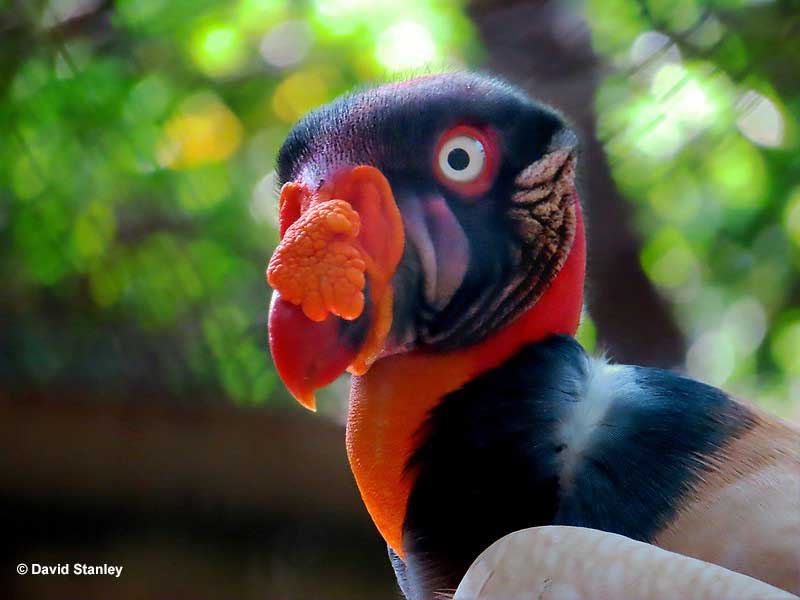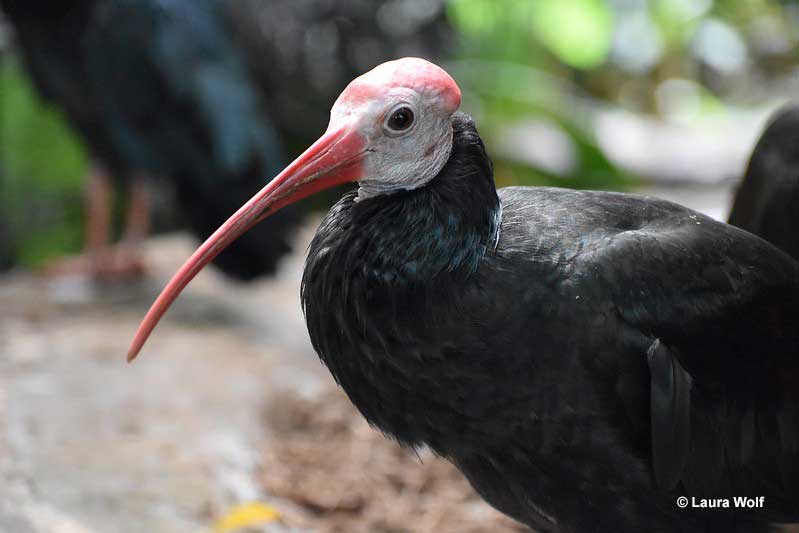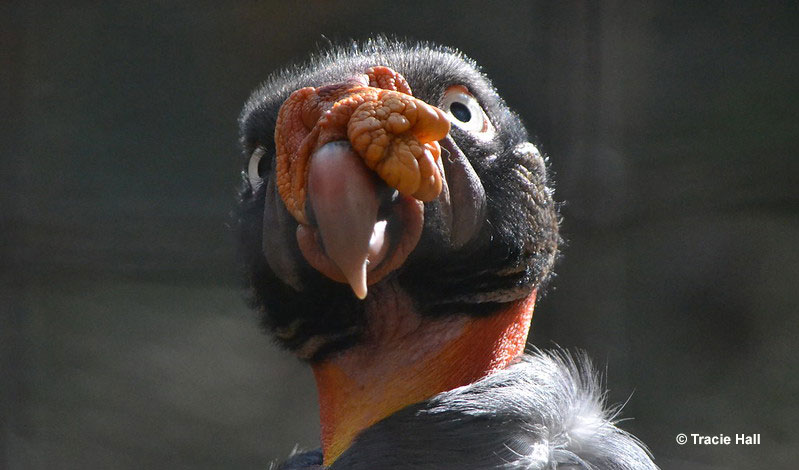
We love birds! The diversification of birds is just fascinating.
But it just so happens that some creatures got the short end of the stick when it comes to appearances. This also holds true for birds – some just look ugly. From the peculiar to the menacing, this list introduces some of them.
However, beauty is in the eyes of the beholder, and it is up to you what to think of them. Take a look!
A Limited Selection: Ugly Birds Across The World
1. Cinereous Vulture
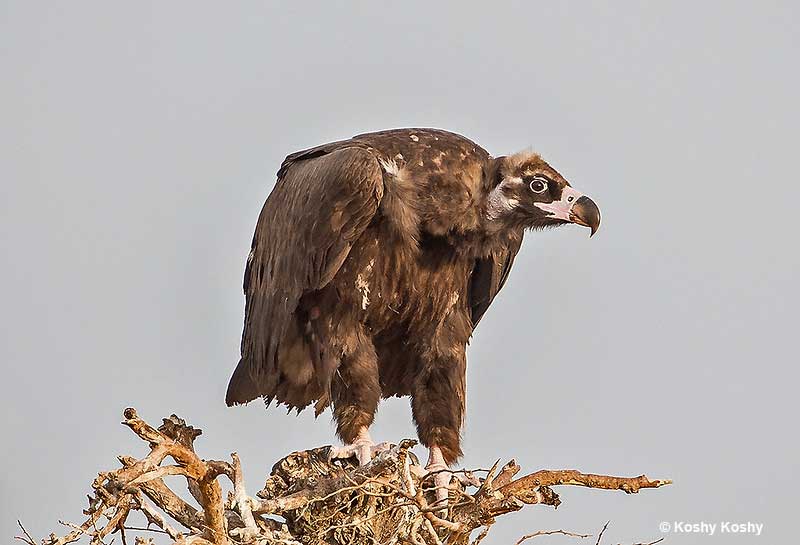
The Cinereous Vulture, also known as the black vulture, monk vulture, and Eurasian black vulture, looks mighty and beautiful from afar with its dark plumage.
It is the largest Old World vulture, with a body length of almost 4 feet and a wingspan of 10 feet. However, if you look closer, its pale head looks like it is recovering from a burn with blue skin peeking out between blotches of pale down.
Related: Most beautiful birds in the world
This vulture, a generally resident Eurasian species, thrives in hilly, mountainous terrains, favoring dry semi-open habitats. It is a solitary bird, often found alone or in pairs, gravitating towards undisturbed, remote areas with limited human presence. They may congregate in small groups at feeding sites.
Since their diet mainly consists of carcasses, they play a crucial role in their ecosystem by curbing the spread of diseases.
Sadly, finding one isn’t easy only because of its solitary, human-avoiding, and silent nature. The Cinereous Vulture is listed as near threatened due to its small population of 16,800-22,800 mature individuals. It is also in decline due to direct and indirect human activities coupled with decreasing food availability.
2. California Condor
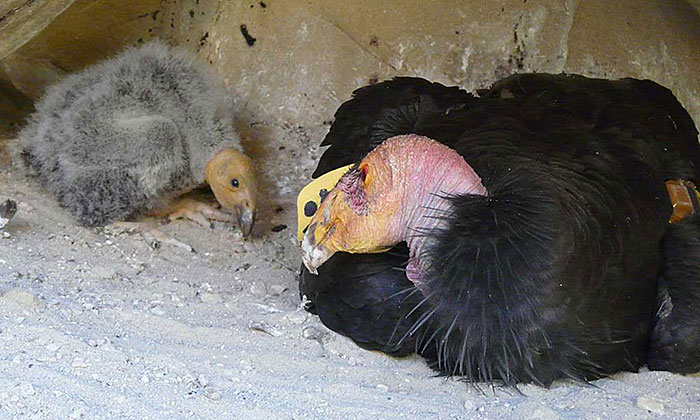
Photograph USFWS
The California Condor, the largest North American land bird, boasts an impressive almost 10 feet wingspan. Surprisingly, females are smaller than males, deviating from the norm among birds of prey.
Resembling a sophisticated but aged dame, the California Condor exhibits black plumage with white underwing, reminiscent of a fashionable coat, and a frill of black feathers resembling an elegant scarf around the neck. Their largely bald heads, ranging from gray to yellow and bright orange, flush noticeably in response to emotional states.
As with other condors and vultures, the California Condor is also a scavenger, consuming large amounts of carrion. They can go 1-2 weeks without eating because they can store up to 3 pounds of meat in their crop.
California Condors are also one of the longest-living birds, with a lifespan of up to 60 years. Despite this, the species faced extinction in 1987, prompting capture and subsequent reintroduction in 1991 after captive breeding efforts.
The slow recovery is attributed to their extremely low reproduction rate, with the birds not nesting every year and females laying only one egg per nesting.
Currently critically endangered, these majestic birds can be observed in central southern California, particularly near cliffs or large trees, with Sisquoc Condor Sanctuary or Sespe Condor Sanctuary offering the best viewing opportunities.
3. Greater Adjutant
The Greater Adjutant is a menacing stork species inhabiting marshes, lakes, grasslands, and fields from Northern India to Indochina. They are classified as near threatened and are becoming exceedingly rarer. So far, captive breeding programs have failed, and their only hope is that the efforts to protect their natural habitats prove successful.
Towering at 4ft 6in with an 8ft 2in wingspan, these birds boast a unique yet unsettling appearance – a sparsely feathered, yellow to pink head, long bill, and distinctive fleshy pouch at the base of their neck. Their body is adorned with white and gray feathers. They walk with a military-style gait, which lends them the name ‘adjutant.’
These birds forage alone or in small groups and are often associated with slaughterhouses and refuse sites near human settlements. They used to be known for consuming human corpses and effortlessly swallowing large bones. In their native range, they were aptly named ‘hargila’, which translates to bone swallower.
4. King Vulture
The King Vulture, a large scavenger endemic to Central and South America, measures 26-32 inches long with an impressive wingspan of 4-7 feet. They prefer undisturbed forests in lowland tropics but occasionally inhabit savannas and grasslands when forests are nearby.
Predominantly white, with a gray to black ruff, flight, and tail feathers, the head and neck of the King Vulture are bald and wrinkled. The bird’s skin color is a mix of yellow, orange, red, purple, and blue. One of their most notable features is the orange fleshy caruncle on their bill.
Adapted for hygiene, the featherless head and neck, adorned with black bristles, prevent bacterial contamination from carrion and expose the skin to sterilizing sunlight.
Featured in: The amazing birds of Costa Rica
The “king” in its name may stem from its dominant behavior at carcasses or from Mayan legends, where it served as a messenger between humans and gods.
5. Southern Bald Ibis
The Southern Bald Ibis has a limited range and mainly inhabits open grassland and semi-deserts in the highland and mountainous regions of southern South Africa.
It has overall black plumage with shades of iridescent green, bronze, blue, and purple. What makes the bird look ugly is its bare and wrinkled whitish head and its pinkish-red dome-shaped crown. The bird’s Latin name refers to exactly that and translates to “bald, old man.”
Living in colonies on cliff edges, these birds feed and roost in large groups of up to 100 individuals, mainly consuming insects and small invertebrates. Despite their habit of traveling in groups, they are generally silent except for the occasional gobble.
With only an estimated 4,600 breeding birds, the Southern Bald Ibis is listed as vulnerable. The decline is attributed to human disturbance at breeding sites and habitat degradation.
6. Helmeted Hornbill
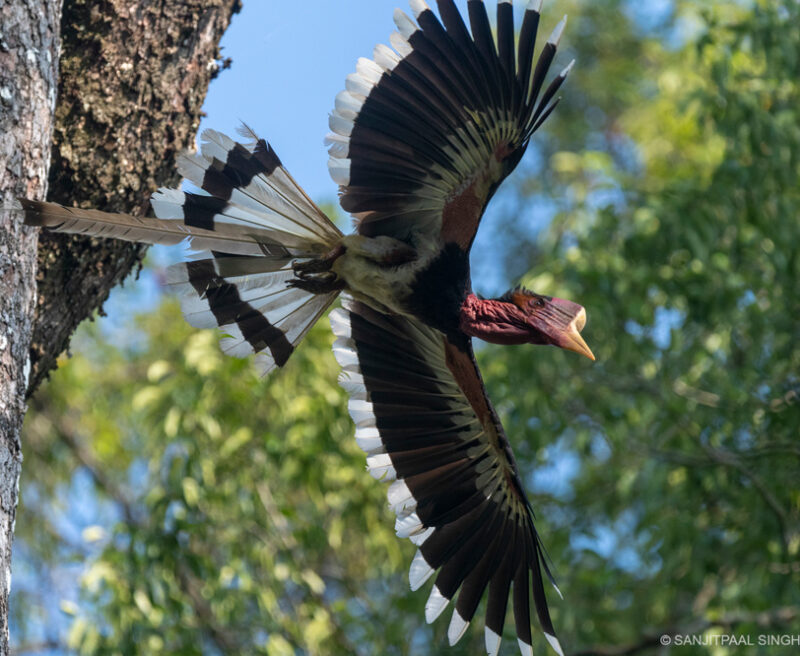
Image credit: worldlandtrust.org
The Helmeted Hornbill inhabits the forests of the Malay Peninsula, Thailand, Myanmar, and Borneo. Their plumage is mostly black with white belly, legs, tail, and wingtips.
Both sexes have a bare, wrinkled throat patch and a big bill with a helmet-like structure called a casque. The birds can measure 43-47 inches in length and weigh around 6 pounds. Their remarkable casque, constituting 11% of their weight, is nearly solid and serves is used in head-to-head combat among males.
Specializing in strangler figs, these birds are thought to be territorial and monogamous, breeding once a year with a single chick raised in a sealed tree cavity. Their unique nesting behavior, coupled with aerial jousting among males, makes them vulnerable to poaching and habitat loss.
The Helmeted Hornbill is classified as critically endangered, with fewer than 100 birds remaining in Thai forests. They face ongoing threats from hunting and extensive trading despite its cultural significance in indigenous groups’ practices and beliefs.
7. Hoatzin
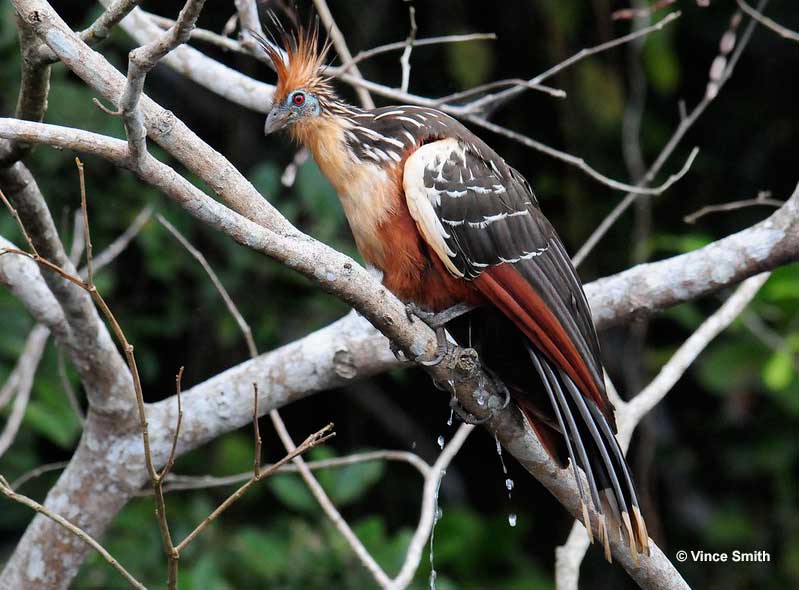
The Hoatzin, a tropical bird endemic to the Amazon in South America, thrives in swamps, riparian forests, and mangroves. Pheasant-sized, with a 26-inch total length, you can easily recognize the birds for their chestnut-brown plumage, reddish-brown crest, blue facial skin, and red eyes.
These birds are territorial, especially during breeding, seeking areas near water for nesting. Due to the scarcity of ideal locations, breeding pairs actively defend their territories. Young Hoatzins stay in their parents’ territory, acting as helpers for a couple of years.
Young Hoatzins are clumsy flyers. It takes them up to seventy days to take their first flight. Because of this, the young have functioning claws at the end of their wings. If they have to flee predators, they use those claws to climb trees. When climbing proves ineffective, they drop down into the water, swimming beneath the surface to safety.
8. Jabiru
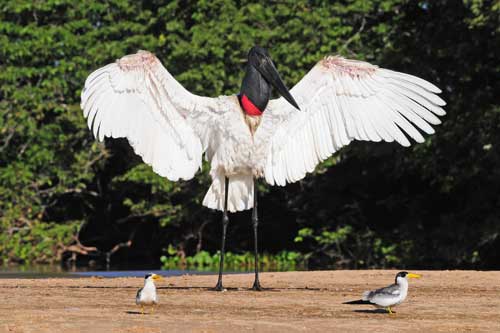
Jabiru and Large-billed Terns
The Jabiru, the tallest flying bird in South and Central America, measures 47-55 inches long and has a wingspan of up to 9.2 feet. Their predominantly white plumage contrasts with a featherless black head and upper neck, which has a stretchy red patch at the base of it, and a broad, slightly upturned black bill. Derived from the Tupi–Guaraní language, the name “jabiru” means “swollen neck.”
Inhabiting the Americas from Mexico to Argentina, excluding areas west of the Andes, Jabirus are occasionally spotted in the United States, particularly Texas. They prefer riverside and pond habitats as they rely on frogs, fish, snakes, insects, and other such creatures to survive.
Jabirus feed in flocks and rely on touch rather than vision, foraging in shallow water with their bill open at a 45-degree angle. Once their prey touches their bill, they clamp it shut and tilt their head back to swallow it.
9. Great Potoo
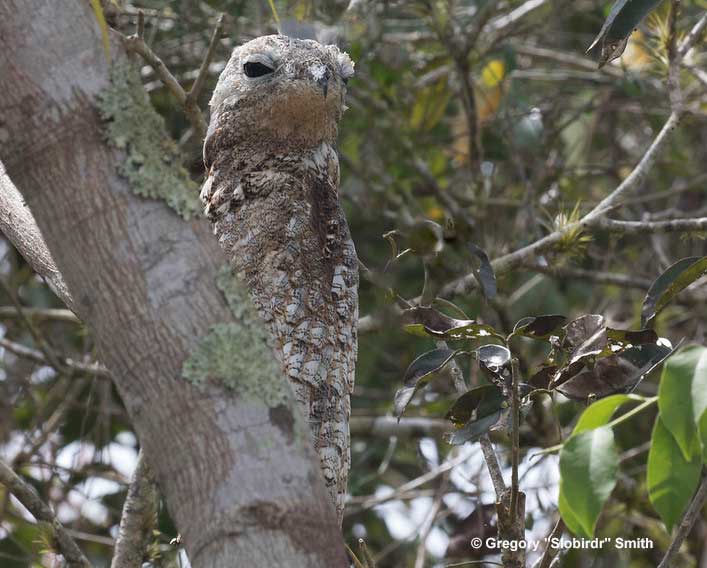
The Great Potoo, colloquially known as the ghost bird, is a distinctive avian species endemic to Central and South America and recognized for its eerie calls.
They have large heads and big and round dark eyes and the ability to detect movement even when their eyes are closed.
When they open their mouths, a vast, gaping hole is revealed, which contributes to their rather intimidating appearance. Their mottled plumage helps them camouflage against tree bark.
Primarily nocturnal hunters, they feed on flying insects, including moths, katydids, beetles, and occasionally bats. Using their camouflaging ability, they sit motionless on exposed branches, darting out to capture their prey and returning to the same perch for eating.
Related: Scariest birds you wouldn’t want to face
Ranging from southern Mexico to Bolivia in neotropical regions, these solitary birds prefer forested habitats, including rainforests and dense lowland forests, but can also be found in grasslands and meadows as long as suitable trees are nearby.
10. Muscovy Duck
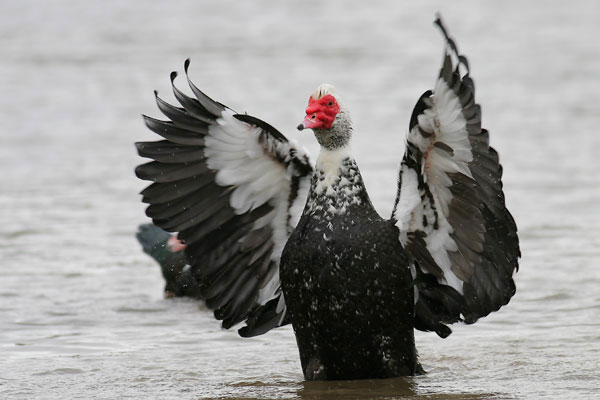
Muscovy Ducks are characterized by their large size, with males measuring up to 30 inches long and weighing up to 15 pounds. Females are notably smaller and weigh only around half of what the male does.
Predominantly black and white, males exhibit glossy, iridescent back feathers, while females look more modest. The bill coloration varies. It can be yellow, pink, black, or a mix of the colors along with reddish wattles around it. They don’t look that ugly, but it can still be an unsettling sight if you’re not used to seeing birds with wattles.
Native to Mexico, Central, and South America, Muscovy ducks also thrive in the lower Rio Grande and parts of Texas. Domesticated Muscovy ducks also adapt well to colder climates. They prefer forested areas near water, where they roost in trees and build nests in tree cavities. Adults may also sleep in water to escape predators more easily.
11. Wild Turkey
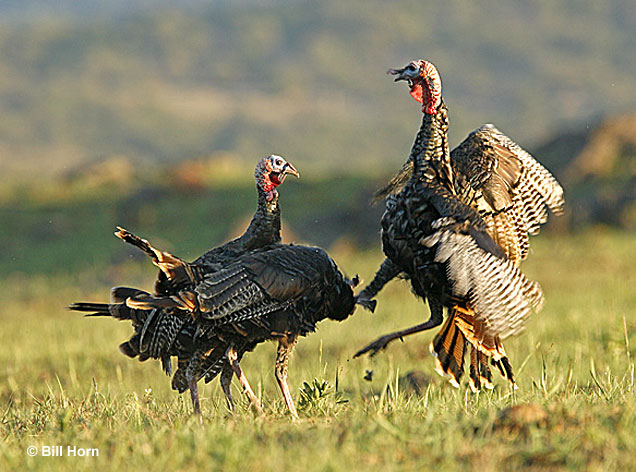
Wild Turkeys can be recognized by their plump shape, long legs, small heads on slim necks, and wide rounded tails. Growing up to 49 inches in length with a wingspan reaching almost 5 feet, these stout birds weigh up to 24 lbs. Body feathers are generally blackish or dark with a coppery sheen.
Mature males boast a large, reddish, featherless head, red throat, wattles, and fleshy growths on the head. Excitement in toms (aka male turkeys) enhances red coloration in caruncles, wattles, and bare skin. Females are less remarkable but also less ugly-looking.
Fully-grown turkeys have reddish-yellow to grayish-green legs and males have spurs on their lower legs, which they use to fight other males. In flocks, they forage on the ground for nuts, berries, insects, and snails, using strong feet to clear leaf litter. During spring, males gather for courtship displays, puffing up feathers, fanning tails, and gobbling. At night, they roost in trees in groups.
12. Andean Condor
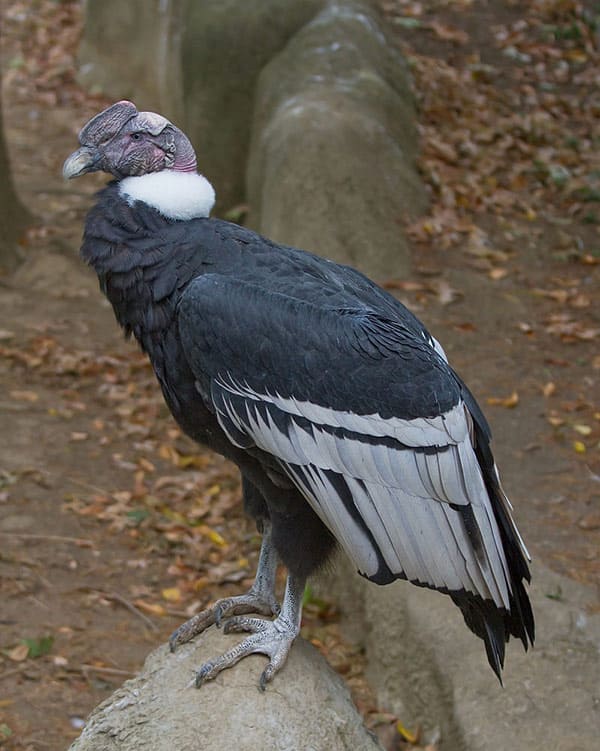
The Andean Condor is a large black vulture with a distinctive “scarf” of white feathers on the base of its neck. This species is the largest living land bird capable of flight. Their nearly featherless head and neck are a dull red color that can flush and change color depending on the bird’s emotional state. Males also have a wattle on the neck and a dark red caruncle on top of their head.
Inhabiting western South America from Venezuela to Tierra del Fuego, Andean condors thrive in mountainous and coastal habitats at elevations of up to 16,000 feet. Preferring open spaces for efficient food detection, they roost and nest on cliff faces using small ledges or caves.
With exceptional flight capabilities, they utilize thermals rising from cliffs to soar effortlessly for hours, covering over 120 miles a day in search of carrion. Turns out that they flap their wings only 1% during flight. Most of it happens during take-off.
Despite their capabilities, Andean Condors are listed as vulnerable, with only 6,700 mature individuals remaining and a decreasing population. They are used to low mortality rates and also don’t reproduce that often, which makes them highly vulnerable to any big changes affecting their population.
13. Marabou Stork
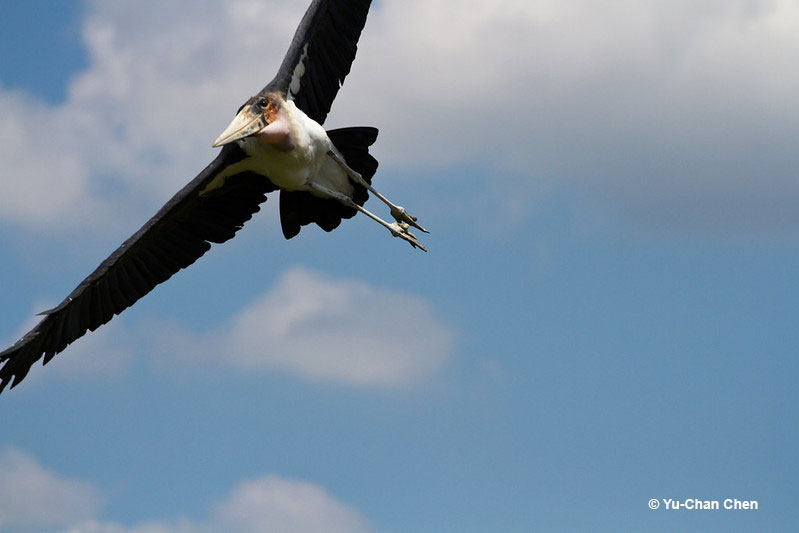
The Marabou Stork commands attention with its towering height of 5 feet and an impressive wingspan of 12 feet. You can recognize it by its bare head and neck, black back, massive bill, and white underparts. However, what makes the bird unmistakable is its massive fleshy throat sac.
This formidable bird, with few natural enemies in adulthood, is frequently found in both wet and arid habitats, often near human settlements and landfill sites in sub-Saharan Africa.
As a scavenger, the Marabou’s naked head and long neck are adaptations to its scavenging lifestyle, allowing for easier maintenance of cleanliness during feeding.
It primarily consumes carrion, scraps, and feces, displaying opportunistic eating habits with a growing dependence on human garbage in urban areas. If they’re used to getting food from humans, they can get frustrated and snap at people when they don’t get anything.
14. Wood Stork
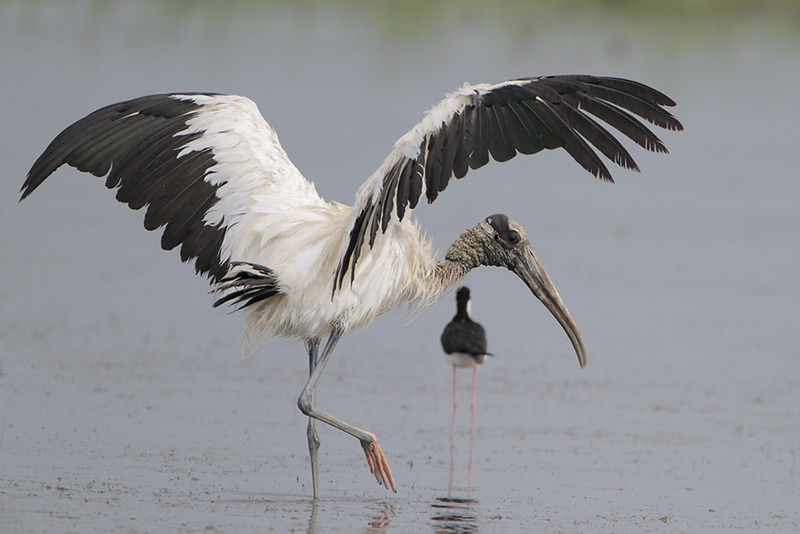
Wood Stork
The Wood Stork has predominantly white plumage which is in stark contrast with its black primaries, secondaries, and tail feathers. Their most distinctive feature is their dark, bare, scaly head and neck, which may look rather unpleasant.
Ranging from North America to Argentina, Wood Storks primarily nest in South Carolina, Georgia, and Florida, occasionally dispersing to North Carolina or west to Mississippi and Alabama post-breeding. Florida is the only place in the US where they can be seen year-round.
These large wading birds like places with tidal waters and inhabit marshes, streams, swamps, and mangroves where they can forage for prey in shallow, muddy-bottomed wetlands.
Wood Storks breed in lowland wetlands with trees, constructing large stick nests in trees, often in colonies of up to 25 nests in a single tree. They also have a unique method of keeping their nestlings cool during hot days – by regurgitating water on them.
15. Shoebill
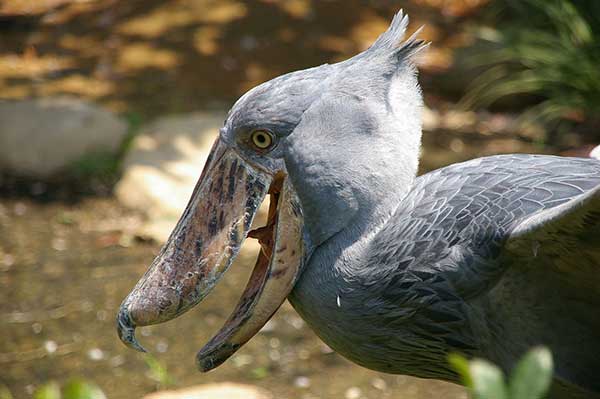
The Shoebill is an intimidating wading bird that is also known as the whalebill, whale-headed stork, or shoe-billed stork. Measuring 43-55 inches in length and boasting an impressive wingspan of up to 8 feet 6 inches, the shoebill’s signature feature is its large, razor-sharp, bulbous bill, straw-colored with erratic greyish markings. Adult birds have blue-gray plumage.
The birds are generally quiet, but when they do vocalize, then it does not help them be any less intimidating. They clatter their bill, which sounds like a machine gun, and throw high-pitched whines and cow-like moos into the mix. Imagine hearing that!
Inhabiting East Africa’s freshwater swamps and marshes, particularly where papyrus vegetation and lungfish are present, the shoebill uses its rather unique bill to hunt fish and even baby crocodiles. They stand motionless for however long it takes for their prey to come into striking distance, after which they launch a swift attack.
Although the female consistently lays two eggs, only one usually survives, with sibling rivalry leading to siblicide. Classified as vulnerable, the Shoebill faces threats such as habitat destruction, disturbance, hunting, and capture for the bird trade across its range.

